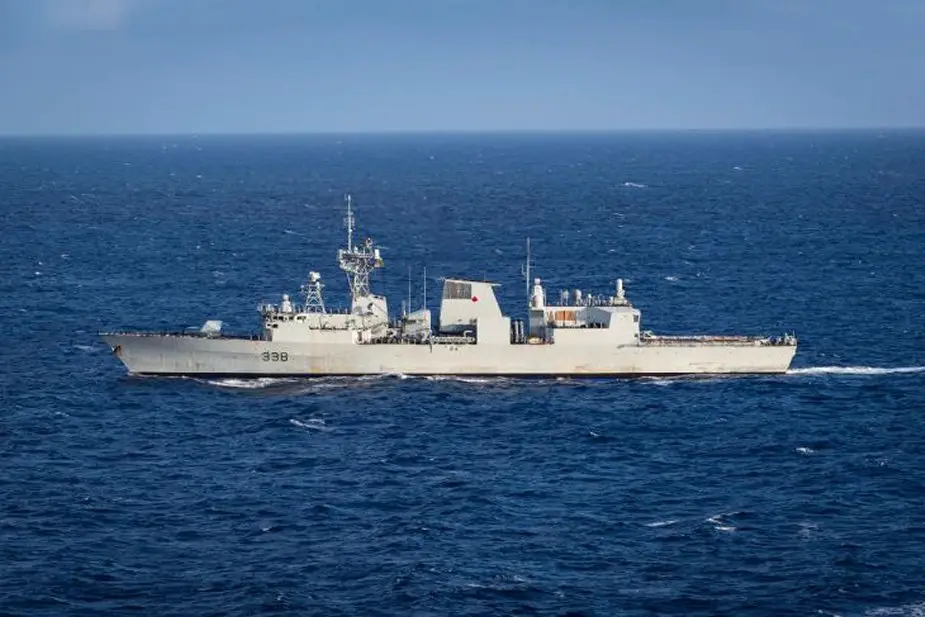Breaking news
Canadian Navy's Halifax-class frigate HMCS Winnipeg visits Indonesia.
According to information published by Antara on September 1, 2022, the Royal Canadian Navy frigate HMCS Winnipeg is in Jakarta for a port visit as part of its Indo-Pacific deployment.
Follow Navy Recognition on Google News at this link
 Royal Canadian Navy's Halifax-class frigate HMCS Winnipeg (Picture source: Canadian MFA)
Royal Canadian Navy's Halifax-class frigate HMCS Winnipeg (Picture source: Canadian MFA)
HMCS Winnipeg is a Halifax-class frigate that has served in the Royal Canadian Navy since 1996. Winnipeg is the ninth ship in her class, whose design emerged from the Canadian Patrol Frigate Project.
The vessel has been deployed on missions throughout the Pacific, and also to the Indian Ocean; specifically on anti-terrorism operations in the Persian Gulf and the Arabian Sea, and counter-piracy operations off the coast of Somalia. The ship is assigned to the Maritime Forces Pacific (MARPAC), and she has her home port at the Canadian Forces Maritime Base at Esquimalt.
As built, the Halifax-class vessels displaced 4,750 long tons (4,830 t) and were 134.65 metres (441 ft 9 in) long overall and 124.49 metres (408 ft 5 in) between perpendiculars with a beam of 16.36 metres (53 ft 8 in) and a draught of 4.98 metres (16 ft 4 in).
That made them slightly larger than the Iroquois-class destroyers. The vessels are propelled by two shafts with Escher Wyss controllable pitch propellers driven by a CODOG system of two General Electric LM2500 gas turbines, generating 47,500 shaft horsepower (35,400 kW) and one SEMT Pielstick 20 PA6 V 280 diesel engine, generating 8,800 shaft horsepower (6,600 kW).
This gives the frigates a maximum speed of 29 knots (54 km/h; 33 mph) and a range of 7,000 nautical miles (13,000 km; 8,100 mi) at 15 knots (28 km/h; 17 mph) while using their diesel engines.
Using their gas turbines, the ships have a range of 3,930 nautical miles (7,280 km; 4,520 mi) at 18 knots (33 km/h; 21 mph). The Halifax class have a complement of 198 naval personnel of which 17 are officers and 17 aircrew of which 8 are officers.
The Halifax-class vessels deployed the CH-124 Sea King helicopter, which acted in concert with shipboard sensors to seek out and destroy submarines at long distances from the ships.
The ships have a helicopter deck fitted with a "bear trap" system allowing the launch and recovery of helicopters in up to sea state 6. The Halifax class also carries a close-in anti-submarine weapon in the form of the Mark 46 torpedo, launched from twin Mark 32 Mod 9 torpedo tubes in launcher compartments either side of the forward end of the helicopter hangar.
The anti-shipping role is supported by the RGM-84 Harpoon Block 1C surface-to-surface missile, mounted in two quadruple launch tubes at the main deck level between the funnel and the helicopter hangar.
The main gun on the forecastle is a 57 mm (2.2 in)/70 calibre Mark 2 gun from Bofors. The gun is capable of firing 2.4-kilogram (5.3 lb) shells at a rate of 220 rounds per minute at a range of more than 17 kilometres (11 mi). The vessels also carry eight 12.7 mm (0.50 in) machine guns.




























